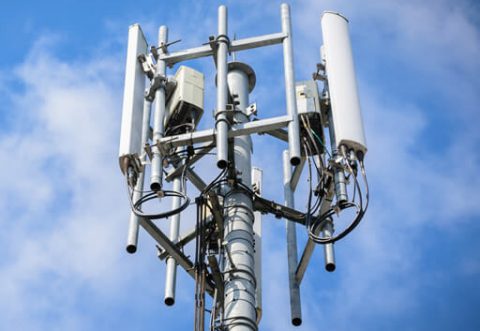In a Chip Scale Review article earlier this year, FormFactor’s Daniel Bock and Jeff Damm discussed testing methodologies for 5G wafer high-volume production. Like all technology advancements, bringing 5G to market requires an array of supporting tools to ensure the end products meet expectations. It will require significant performance advances in chip technology and manufacturing processes—all the while keeping price/performance at an economically viable level.
And, like all technology advancements, there are challenges that need to be addressed, especially with regards to RF production. Here are three that Daniel and Jeff address in the article that are worth sharing:
1. Higher frequencies with more channels per device.
The first big shift that is affecting the test cell is the new, higher speed channels operating up to almost 70GHz. Traditional HVM wafer testers are capable up to 6GHz, which covered all of the bands being used by 4G. In addition, these testers could be extended to higher frequency with custom extenders, adding 1-2 channels at these frequencies. The 5G devices that are being developed will include up to 64 RF channels per device under test (DUT) in the highest channel count. This means that a traditional tester is likely not the best solution because of the frequency limitations. Semiconductor manufacturers are requesting new test solutions with more mmWave channels than current off-the-shelf testers are capable of. Potentially expanding the SMU to support this would be a possible solution, it should also be noted that any tester that is developed cannot be too expensive or production test would become economically unviable. Adding higher frequencies with the large channel counts could feasibly increase tester cost more than 10x.
2. Increased parallelism.
Increased parallelism also leads to the need to perform multi-site RF test. Currently, mobile RF system-on-chips (SoCs) are tested at x4 multi-site wafer test, with a desire to get to x8 fully parallel test when possible. This still holds true with 5G devices. However, the x8 parallelism pushes the total channel count upward to more than 256 RF channels on many of the devices being developed today. Making a tester that could connect to this number of RF channels is not practical for two reasons: 1) cost, and 2) space limitations within the test floor. Today, many 5G test cells are augmenting their big ATE testers with alternative methods to increase the total channel count they need. These methods can include using baluns, power combiners, switches, and loopback test all potentially as part of a device specific probe card.
3. Verifying signal accuracy.
The last requirement for 5G parts is accurate RF test in the test cell. This is not only to validate RF performance, but to prevent packaging bad devices. High-speed signals in 5G mean that the DUT is more sensitive to process variation, especially in the initial stages of technology development. That often means lower yields making a strong COO case for performing RF test at wafer sort.
In order to support high signal integrity, measurement errors—such as impedance mismatch, cable loss, and RF source variation over time—that might be considered insignificant at lower frequencies can become important at millimeter wavelengths. Using a simultaneous multisite calibration during multi-DUT testing provides the highest electrical accuracy because all the DUT RF channels are in a known and controlled state.
We at FFI have been researching cost- effective options for low cost mmWave testing by finding ways to intelligently optimize the test resources between testers and probe cards to support the parallel test of significant higher RF channels. This would include upconverters/downconverters that translate between RF signals and IF signals, COTS switching for cost-effective signal routing, and power splitters capable of feeding many channels in parallel.
As 5G moves forward, we are fully committed to collaborating with leading manufacturers to develop innovative test and measurement approaches that will support the enormous infrastructure required to fulfill its exciting promise.
